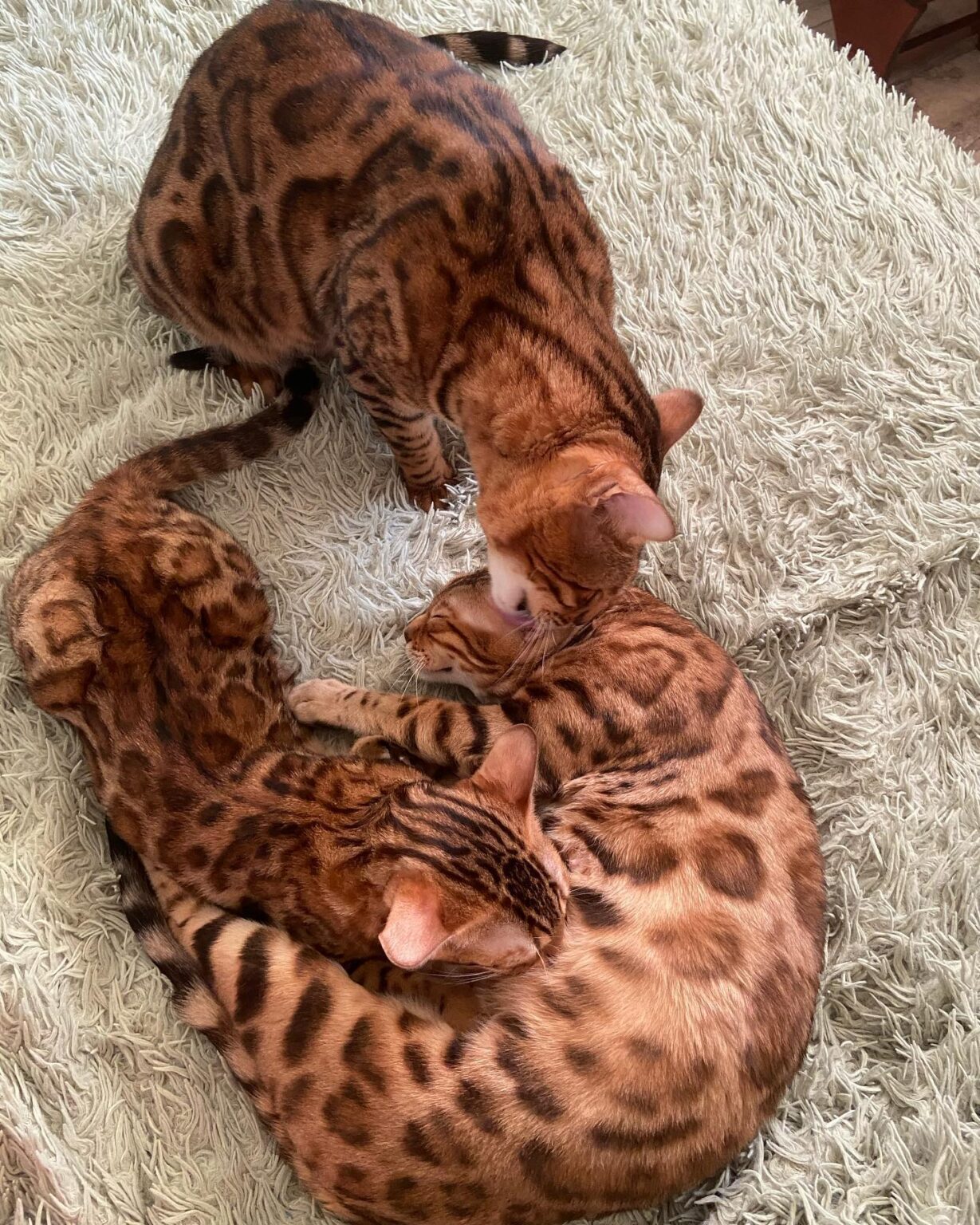Essential Care Tips for a Happy & Healthy Bengal Cat: From Kitten to Adult
Bringing a Bengal cat into your home is an exciting and rewarding experience. With their wild-like appearance, sparkling rosettes, and playful personalities, Bengals are as captivating as they are active. But their beauty and brains come with specific care requirements. Whether you’re welcoming a curious kitten or caring for a majestic adult, understanding Bengal cat care is key to a happy, healthy life together.
This blog shares essential tips for caring for a Bengal cat through every stage of their life. From nutrition and exercise to grooming, health checks, and mental stimulation, we’ve got you covered.

A Diet Fit for a (Mini) Leopard
Feeding your Bengal cat the right food is one of the most important steps in keeping them healthy. Bengals are muscular and energetic, requiring a high-protein diet to maintain their energy levels and lean physique.
A balanced diet rich in animal protein (chicken, turkey, fish) helps fuel their daily activities. Many Bengal owners opt for a mix of wet and dry food, while some consider raw feeding under veterinary supervision. Wet food is excellent for hydration, especially since cats don’t always drink enough water.
Portion control is vital. Overfeeding can lead to weight gain, even in this athletic breed. Ensure fresh water is available at all times and clean their bowls regularly. Bengal cat care starts with a healthy gut!
Keeping Your Bengal Active and Engaged
Bengals aren’t lap cats who nap all day. Their high energy and intelligence mean they need daily play and movement. Without proper stimulation, they may channel their energy into less desirable habits, like scratching furniture or raiding cabinets.
Interactive play sessions with feather wands, laser pointers, and balls are a great way to keep them busy. Puzzle feeders provide both mental and physical challenges, combining snack time with brain games.
Bengals also love climbing and perching. Install cat trees, window hammocks, and vertical shelves to encourage movement and exploration. If your environment allows, leash training can provide safe outdoor experiences. Thirty to sixty minutes of activity daily helps keep your Bengal fit and entertained.
Keeping That Leopard Look Pristine
One reason people love the Bengals is their sleek, short coats. The good news? Their fur is relatively low-maintenance.Weekly brushing helps remove loose hairs, minimizes shedding, and gives you bonding time. Though they groom themselves well, this routine helps maintain coat shine and reduces hairballs. Keep claws trimmed regularly, clean their ears gently with vet-approved products, and brush their teeth to prevent dental issues.
Grooming isn’t just about appearance; it helps you check for fleas, ticks, and any skin problems early on.
Ensuring a Long and Healthy Life
Regular vet check-ups are crucial in caring for a Bengal cat. Schedule annual wellness visits to monitor their overall health, get booster vaccinations, and catch any concerns early.
While Bengals are generally healthy, they can be prone to specific conditions like heart disease (hypertrophic cardiomyopathy) and certain gastrointestinal issues. Ask your vet about screening tests.
Parasite prevention is essential, even for indoor Bengals. Use vet-recommended flea, tick, and worm preventatives. Considering pet insurance can also be helpful, as it eases financial worries in case of unexpected illness or injury.
Keeping Those Sharp Minds Busy
Mental stimulation is just as important as physical activity for this intelligent breed. Without it, the Bengals can become bored and destructive.
Puzzle toys, treat-dispensing balls, and interactive games keep their minds active. Many Bengals enjoy learning tricks or even playing fetch. You can also teach them basic commands using positive reinforcement.
Bengals love to observe the world around them. Set up window perches or bird-watching stations to keep them entertained. A rotating selection of toys also keeps things interesting and prevents boredom.
Home Sweet (Exotic) Home
Creating a Bengal-friendly space ensures your feline feels safe and comfortable. Start with the basics: a clean, spacious litter box placed in a quiet area. Keep it scooped daily and sanitized regularly.
Provide scratching posts and boards to satisfy their natural instinct to claw. This also protects your furniture. Soft bedding in warm, quiet spots gives them a secure place to nap. Many Bengals also enjoy hiding places, so consider adding cat tunnels or covered beds.
A stimulating environment combined with predictability in daily routines helps reduce stress and supports good behavior.
Growing Up Bengal: Tailoring Your Approach
Caring for a Bengal cat varies slightly depending on their age. Kittens need more frequent meals, safe spaces to explore, and plenty of socialization. Introduce them gently to grooming routines, handling, and other pets.
Adult Bengals benefit from a consistent routine and continued enrichment. Older Bengals might need vet check-ups more frequently and may require diet adjustments to support joint health or weight management.
Conclusion
Bengal cats are vibrant, intelligent companions who thrive with the right Bengal cat care. From nutrition and exercise to grooming and mental stimulation, Bengal cat care involves attention and dedication. But the joy, playfulness, and affection they bring in return are well worth the effort.
FAQs
Q: How often should I feed my Bengal cat?
A: Most adult Bengals do well with two meals a day. Kittens may need more frequent feedings.
Q: How much exercise does a Bengal cat need?
A: At least 30 to 60 minutes of interactive play and activity daily.
Q: Are Bengal cats easy to care for?
A: They require more time and interaction than some other breeds but are rewarding pets for active households.
Have tips of your own for Bengal cat care? Share them in the comments! Want to learn more about the Bengals? Explore our other articles on breed behavior and health.
Post Tags :
Share :
